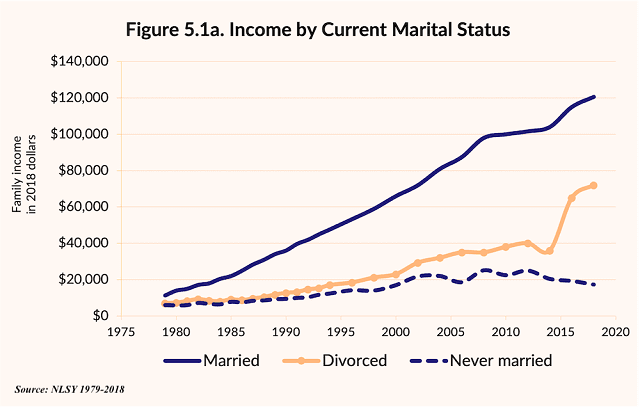by Nicholas H. Wolfinger (@NickWolfinger) and Matthew McKeever
Incomes grew steadily for all families in the decades prior to the Great Recession, but the strongest gains belonged to married parents. Having two incomes rather than one goes a long way towards explaining prosperity. Another part of this story is the human capital enjoyed by married mothers. While all mothers have more education and job experience than they used to, married mothers continue to enjoy a strong advantage in labor market qualifications. These resources translate into higher incomes, but not equally. Married and divorced mothers reap relatively similar levels of returns to their demographic and social characteristics, while never-married mothers fare far worse.
Thedifferencesbyfamilystructurearesubstantial.Womenwhogivebirthoutofwedlocksufferfrompervasivedisadvantagethatcannotbeexplainedbytheirbasicsocialanddemographicattributes. Theyworkless.Whentheydowork,theymakelessmoney.Ahighschoolorcollegeeducationprovideslowereconomicreturnsthanitdoesformarriedordivorcedmothers.Never-marriedmothers’incomesincreasemoreslowly





